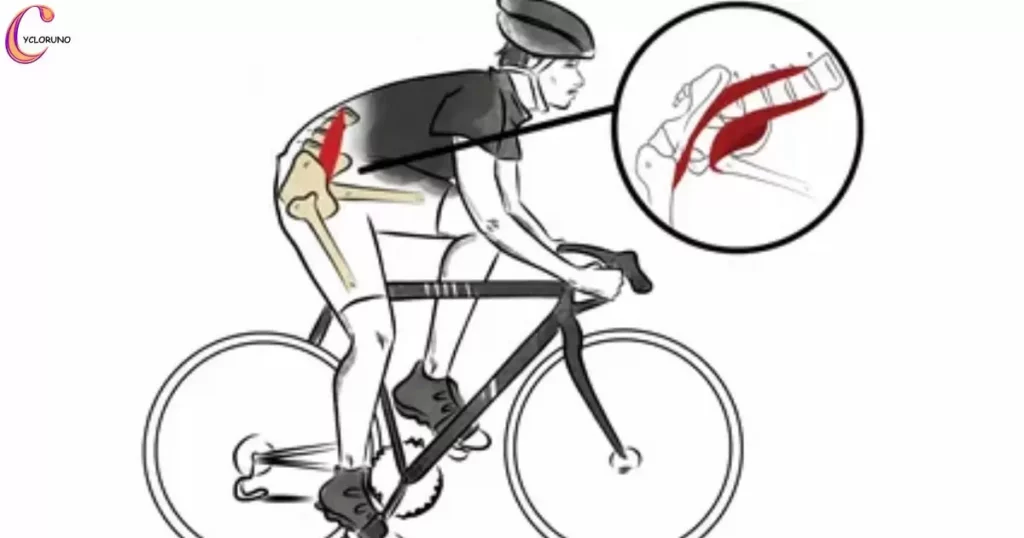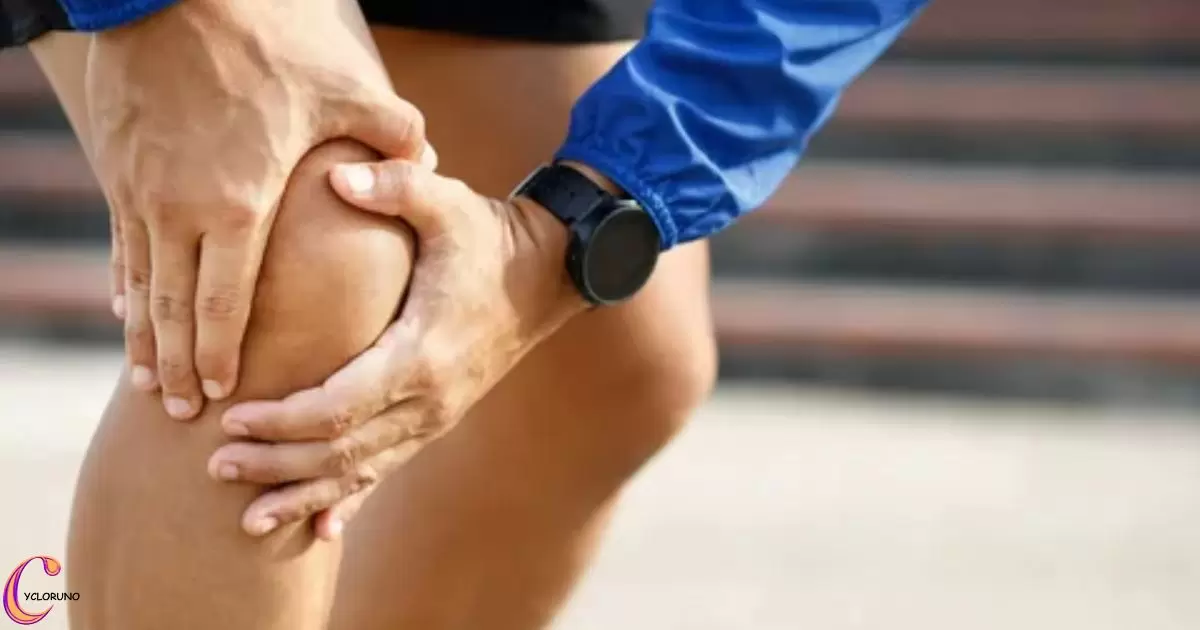SI Joint Pain refers to discomfort in the lower back and pelvis caused by issues with the Sacroiliac Joint. This joint connects the spine to the pelvis, and when it’s unhappy, it can cause soreness and stiffness. Rest and gentle exercises can help make it feel better.
Cycling can be a fantastic way to alleviate discomfort in your SI joint. Imagine a fun and active adventure on your bike, all while helping to ease that bothersome pain. So, Is cycling good for SI joint pain? Indeed, it is. Hop on your bicycle and take a ride towards a pain free future.
Cycling, as a low impact exercise, can potentially alleviate SI joint pain by strengthening muscles and improving flexibility. Proper form and gradual progression are essential for maximizing its benefits without exacerbating the condition.
The Benefits of Cycling for SI Joint Pain
Cycling offers numerous benefits for SI joint pain sufferers. Its low impact nature minimizes stress on the joints, providing relief from discomfort. The rhythmic motion of pedaling helps strengthen muscles that support the SI joint and enhance flexibility. This combination makes cycling a promising option to manage and alleviate joint pain.
Additionally, cycling promotes improved circulation and overall cardiovascular health, contributing to a more active and pain free lifestyle. It’s an enjoyable way to engage in physical activity without overstressing the SI joint. Consult with a healthcare professional to determine the suitability of cycling for your specific condition.
Low Impact Exercise and SI Joint Pain
Low impact exercises, like cycling, are gentle on the SI joint, making them a valuable choice for those with joint pain. Unlike high impact activities, cycling reduces the risk of exacerbating discomfort and inflammation in the SI joint.
This low impact nature allows individuals to engage in regular physical activity without compromising their joint health. Incorporating cycling into your routine can be a beneficial step towards managing joint pain more comfortably.
Strengthening Muscles and Supporting the SI Joint
Cycling is an effective way to strengthen the muscles that support the SI joint. The pedaling motion engages the muscles of the legs, hips, and lower back, helping to stabilize and protect the SI joint.
As these muscles become stronger, they can better support the joint and alleviate pain. Regular cycling, with its focus on building cycling instant speed, can contribute to improved SI joint stability and overall comfort.
Improving Flexibility and Range of Motion
Cycling can enhance flexibility and range of motion in the SI joint area. The repetitive, controlled movements involved in cycling help to loosen up tight muscles and promote greater joint mobility.
Over time, this can lead to reduced stiffness and increased comfort, especially for those with SI joint pain. As flexibility improves, individuals may experience greater ease in their daily activities.
Considerations and Tips for Cycling with SI Joint Pain

When cycling with SI joint pain, it’s crucial to prioritize proper bike fit and posture to avoid exacerbating discomfort. Gradually increase cycling intensity and duration to allow the body to adapt without strain on the joint.
Alternate cycling with other low impact exercises to prevent overuse and maintain joint health. Consulting with a healthcare professional or a certified trainer can provide tailored guidance for cycling techniques and modifications to suit individual needs.
Additionally, investing in a comfortable and supportive saddle can significantly enhance the riding experience for those with joint pain. Pay close attention to any discomfort or pain during and after cycling sessions, adjusting your routine as needed.
Proper Bike Setup and Posture
Achieving the right bike setup and maintaining proper posture are essential for those with this joint pain. Start with a well fitted bike that suits your body size and type, reducing the risk of strain.
Pay attention to saddle height and handlebar position to ensure a comfortable riding position. Maintaining good posture while cycling, with a neutral spine and relaxed shoulders, can help distribute pressure evenly and prevent unnecessary stress on the SI joint.
Gradual Progression and Listening to Your Body
For individuals with SI joint pain, gradual progression is key when incorporating cycling into their routine. Start with shorter rides and lower intensities, allowing the body to adapt without overexertion. Listen to your body’s signals and be mindful of any discomfort or pain during or after cycling.
If you experience increased pain or discomfort, it’s essential to adjust your routine, reduce intensity, or consult with a healthcare professional for guidance on safer and more comfortable cycling practices.
Expert Insights and Recommendations
Expert insights and recommendations play a crucial role in managing SI joint pain effectively. Physiotherapists and medical professionals can offer valuable guidance on the suitability of cycling for individual cases.
Their expertise can help tailor exercise routines and techniques to ensure maximum benefits and minimal discomfort. It’s essential to seek professional advice and incorporate their insights into your approach to managing SI joint pain through cycling.
In addition to professional recommendations, personal experiences and success stories from individuals who have effectively managed SI joint pain through cycling can offer motivation and practical insights. Incorporating expert insights and personal anecdotes can help individuals make informed decisions on their journey to pain relief.
Insights from Physiotherapists or Medical Professionals
Insights from physiotherapists and medical professionals are invaluable when it comes to managing SI joint pain through cycling. These experts can provide guidance on exercises, posture, and bike setup tailored to individual needs.
They offer evidence based advice on the benefits and risks associated with cycling in specific cases, ensuring safe and effective pain relief strategies. Consulting with these professionals can lead to a more informed and personalized approach to addressing SI joint pain.
FAQ’s
Is cycling OK for SI joints?
Cycling can be beneficial for SI joint pain, but it’s essential to ensure proper bike setup and posture to prevent exacerbating discomfort.
How can I speed up my SI joint recovery?
To speed up SI joint recovery, follow a tailored physical therapy program, maintain good posture, avoid aggravating activities, and consult with a healthcare professional for personalized guidance.
How do I relax my SI joint?
To relax your SI joint, gentle stretching, heat or ice therapy, and over the counter pain relievers can provide relief, consult with a healthcare professional for specific recommendations.
Can cycling help alleviate SI joint pain?
Yes, cycling can be beneficial for relieving SI joint pain as it’s a low-impact exercise that minimizes stress on the joints.
What precautions should I take when cycling with SI joint pain?
When cycling with SI joint pain, make sure to adjust your bike’s fit, maintain proper posture, and consult a healthcare professional for tailored advice.
Conclusion
In conclusion, when thinking about whethe Is cycling good for SI joint pain? Cycling, a low impact exercise, is often a great choice to reduce discomfort and improve your overall well being. By pedaling gently, you can strengthen the muscles around your SI joint without causing too much stress on it. This may provide relief from the pain and make your daily life more comfortable.
However, remember to be cautious. It’s crucial to start slowly, ensure your bike is adjusted properly, and maintain good posture while cycling. If you have any doubts or severe pain, it’s wise to consult a healthcare professional for personalized guidance.
So, yes, cycling can be good for SI joint pain if done correctly and with attention to your body’s needs. With the right approach, you can enjoy the benefits of cycling while supporting your SI joint health.








